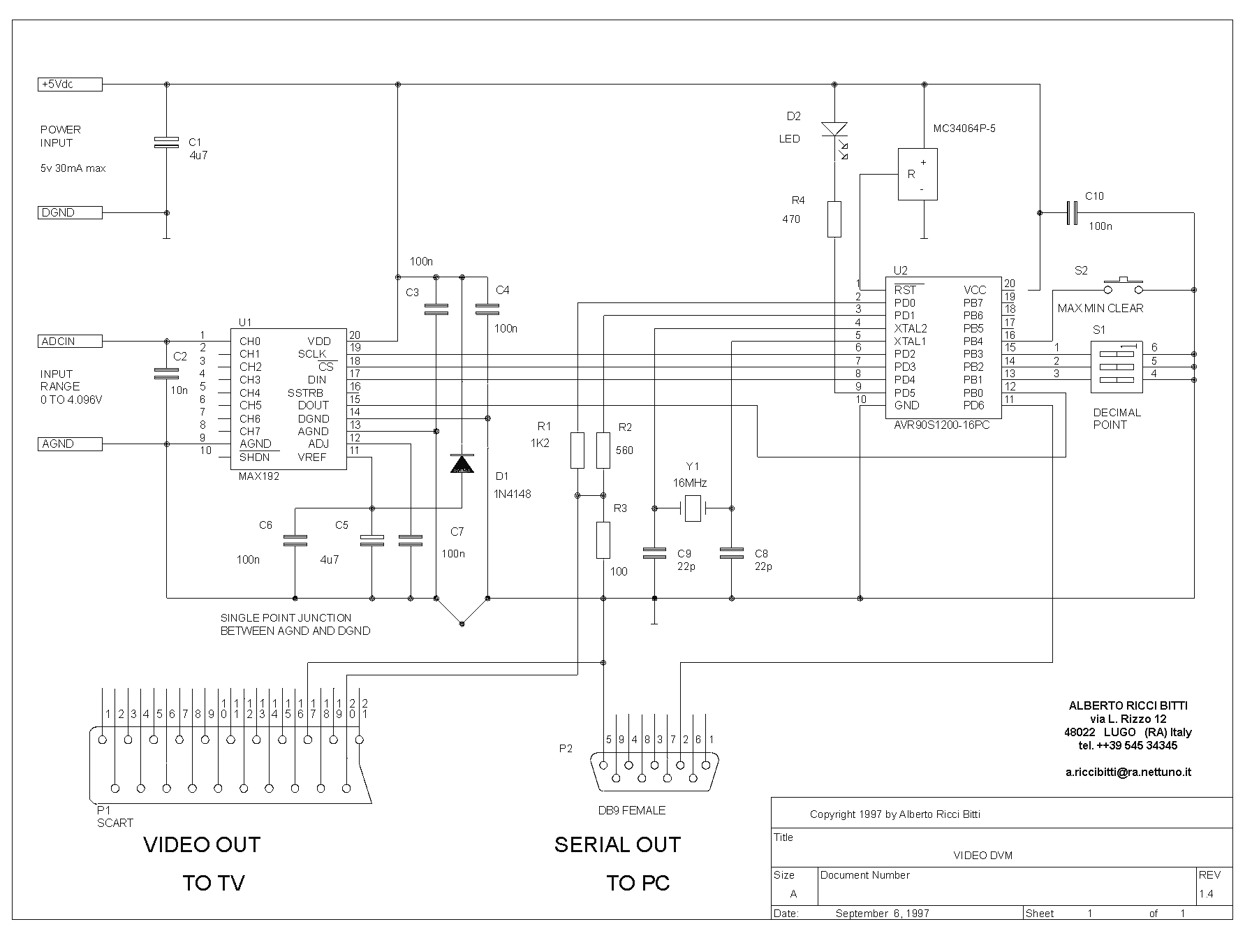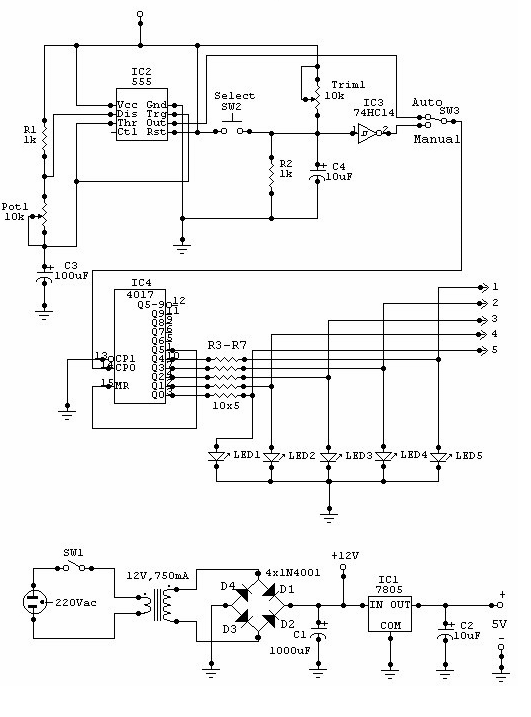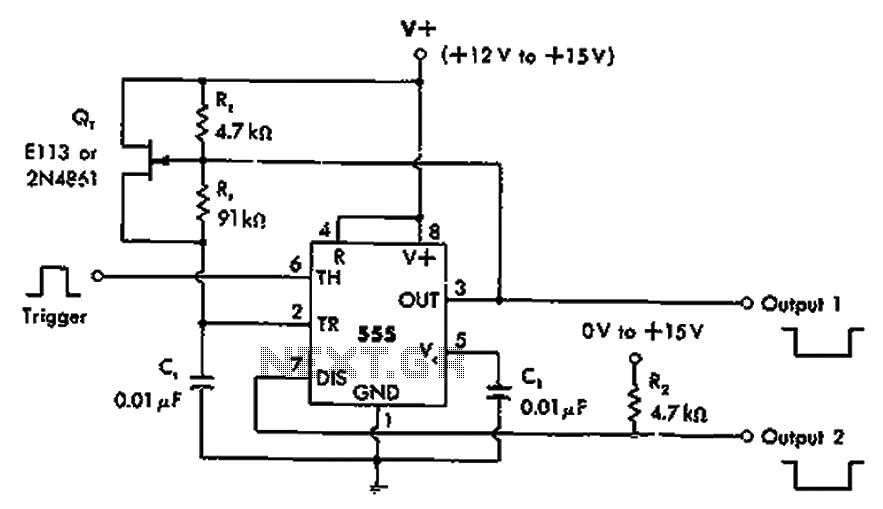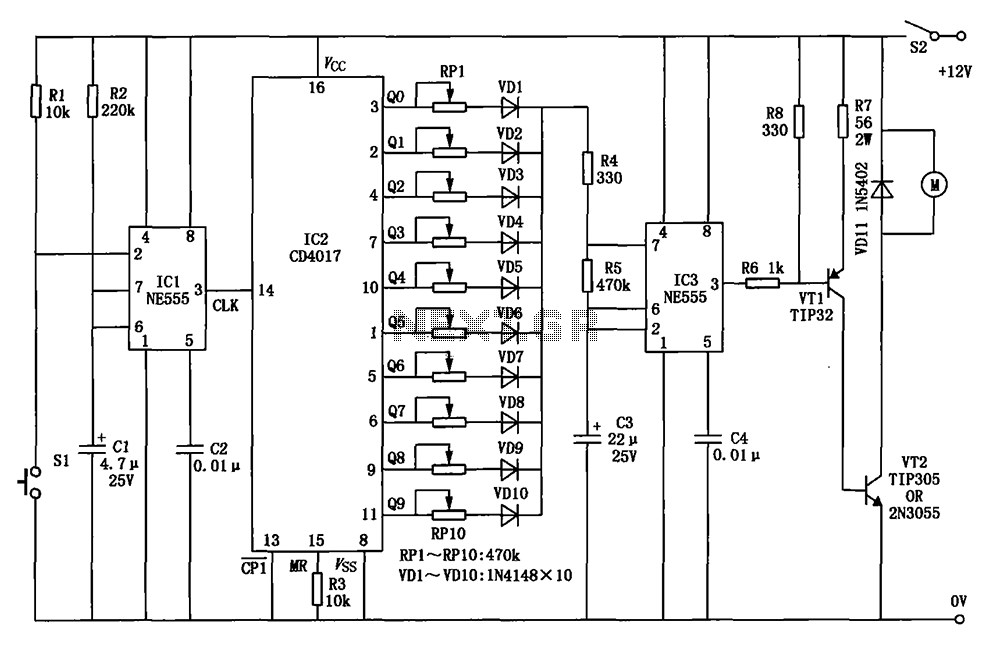
inner flash circuit of camera
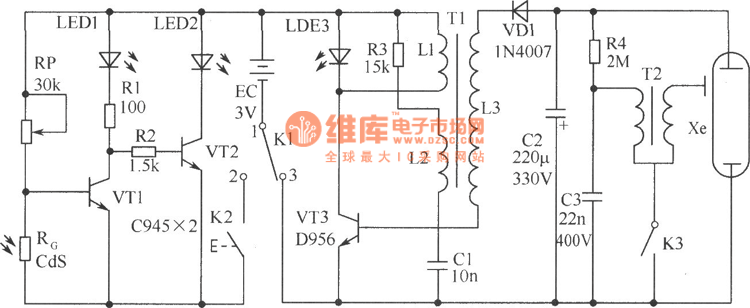
The circuit consists of a light metering circuit and a flash circuit, as illustrated in the accompanying image. It is designed for use with integrated cameras such as POPTICS, Franka X-500, and WIZEN-860S. The circuit includes the following components: (1) VT1 and VT2, which work with a light metering device RG that utilizes a cadmium sulfide (CdS) photoresistor to form the light metering circuit. VT3, C1, and T1 are part of the induction circuit.
The circuit design integrates a light metering system that utilizes a CdS photoresistor, known for its sensitivity to light levels. The photoresistor's resistance decreases as light intensity increases, providing a variable resistance that is critical for controlling the exposure in the camera. VT1 and VT2 are typically configured as transistors that amplify the signal from the photoresistor, ensuring that even minor changes in light levels can be detected and processed effectively.
The flash circuit, comprising VT3, C1, and T1, is responsible for managing the timing and activation of the flash unit. T1 functions as a transformer that steps up the voltage to trigger the flash, while C1 serves as a capacitor that stores energy, releasing it in a quick burst to produce the flash. The coordination between these components allows for precise control of the flash timing, ensuring that it activates at the optimal moment for capturing images.
Overall, this circuit is designed to enhance the functionality of cameras by providing accurate light measurement and effective flash operation, making it suitable for various camera models and improving the quality of photographs taken in diverse lighting conditions.The circuit is formed by light metering circuit and flash circuit,just as shown in picture.It is suitable for POPTICS (a popular integrated camera), Franka X-500, WIZEN-860S and so on.It consists of the following circuit:(1)VT1,VT2,light metering device RG (using cadmium sulfide CdS photoresistor)form the light metering circuit. VT3,C1,T1 form the indu.. 🔗 External reference
The circuit design integrates a light metering system that utilizes a CdS photoresistor, known for its sensitivity to light levels. The photoresistor's resistance decreases as light intensity increases, providing a variable resistance that is critical for controlling the exposure in the camera. VT1 and VT2 are typically configured as transistors that amplify the signal from the photoresistor, ensuring that even minor changes in light levels can be detected and processed effectively.
The flash circuit, comprising VT3, C1, and T1, is responsible for managing the timing and activation of the flash unit. T1 functions as a transformer that steps up the voltage to trigger the flash, while C1 serves as a capacitor that stores energy, releasing it in a quick burst to produce the flash. The coordination between these components allows for precise control of the flash timing, ensuring that it activates at the optimal moment for capturing images.
Overall, this circuit is designed to enhance the functionality of cameras by providing accurate light measurement and effective flash operation, making it suitable for various camera models and improving the quality of photographs taken in diverse lighting conditions.The circuit is formed by light metering circuit and flash circuit,just as shown in picture.It is suitable for POPTICS (a popular integrated camera), Franka X-500, WIZEN-860S and so on.It consists of the following circuit:(1)VT1,VT2,light metering device RG (using cadmium sulfide CdS photoresistor)form the light metering circuit. VT3,C1,T1 form the indu.. 🔗 External reference


